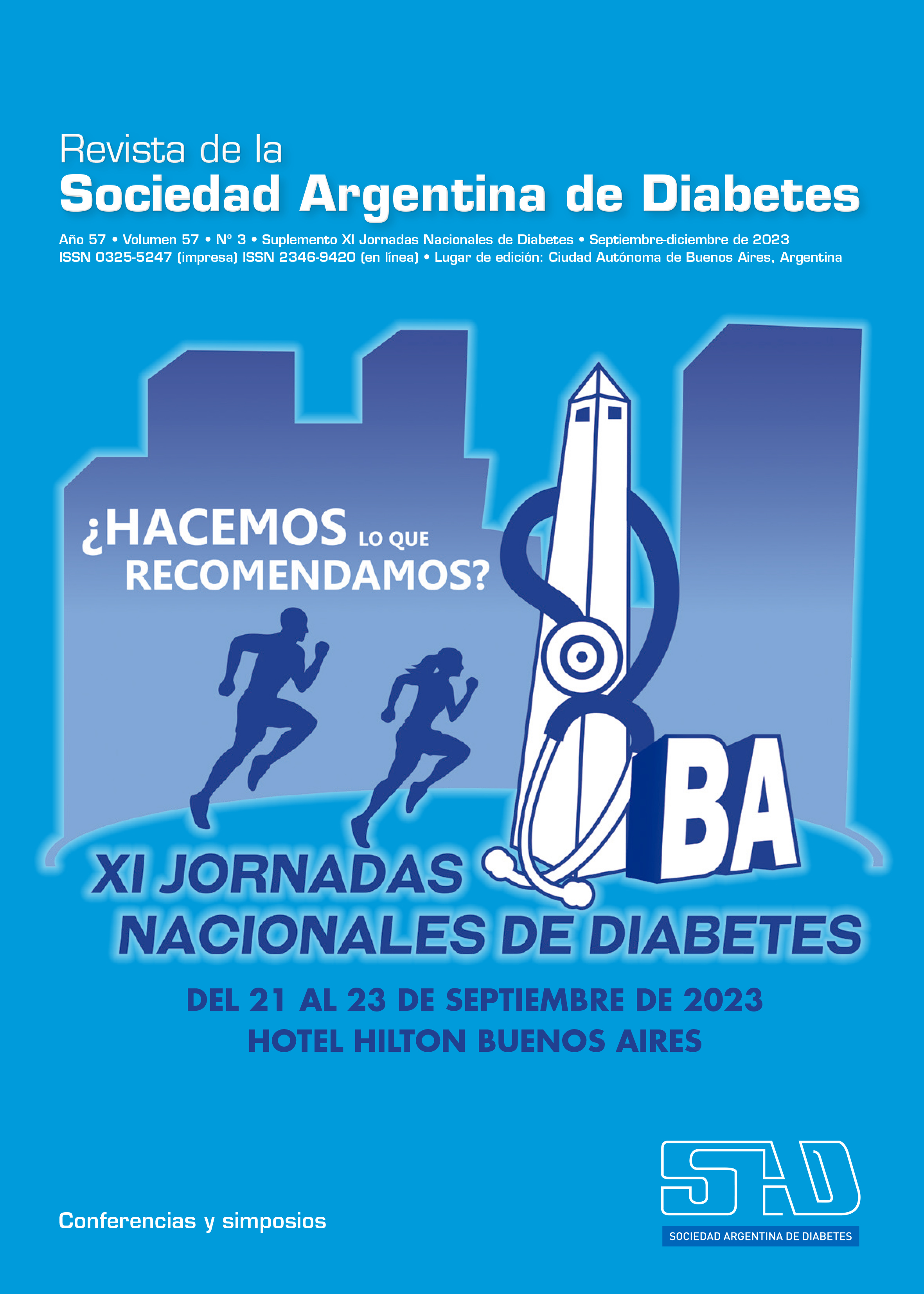Can diabetic ketoacidosis be prevented at onset?
DOI:
https://doi.org/10.47196/diab.v57i3Sup.643Keywords:
diabetic ketoacidosis, diagnosisAbstract
Despite advances in treatment and recognition of risk factors, diabetic ketoacidosis (DKA) continues to be the leading cause of death in pediatric patients with type 1 diabetes mellitus (DM1), and this risk is higher in the debut of the disease, mainly in younger children. In addition, a history of CAD debut reflects a greater loss of beta cell functionality during the preclinical period, and is a proven risk factor for suboptimal metabolic control and early development of cardiovascular complications and mortality.
The occurrence of CAD at diagnosis of DM1 varies from 13 to 80% in the world. In our country it is 40%, remaining stable in recent years with the exception of 2020, when during the confinement due to the COVID-19 pandemic, more than 70% of the debut was in CAD.
The highest incidence of DM1 in the country is inversely related to the frequency of debut in CAD, probably because knowledge of DM1 in the community alerts to early consultation at the first symptoms, and in pediatricians to clinical suspicion and timely referral. to the specialist. Several countries designed education campaigns on DM1 in schools and health centers, the results of which showed a decrease in the incidence of CAD at debut.
In the epidemiological studies Diabetes Prevention Trial 1 (DPT 1), The Environmental Determinants of Diabetes in the Young (TEDDY) and Diabetes Autoimmunity Study in the Young (DAISY), a decrease in CAD onset was observed compared with the general population, although none of them was completely prevented from appearing.
Different strategies are postulated for its prevention, from education campaigns for health care providers and the community, autoantibody evaluation to identify susceptible individuals, to treatment with monoclonal antibodies to delay the loss of beta cell mass and, thus, avoid the development of DM1.
References
I. Derraik JGB, Cutfield WS, Maessen SE, Hofman PL, Kenealy T, Gunn AJ, Jefferies CA. A brief campaign to prevent diabetic ketoacidosis in children newly diagnosed with type 1 diabetes mellitus: The NO-DKA Study. Pediatr Diabetes 2018;19(7):1257-1262.
II. Holder M, Ehehalt S. Significant reduction of ketoacidosis at diabetes onset in children and adolescents with type 1 diabetes. The Stuttgart Diabetes Awareness Campaign, Germany. Pediatr Diabetes 2020;21(7):1227-1231.
III. Ferrat LA. TEDDY Study Group. A combined risk score enhances prediction of type 1 diabetes among susceptible children. Nat Med 2020;26(8):1247-1255.
IV. Sims EK. The deterrence of rapid metabolic decline within 3 months after teplizumab treatment in individuals at high risk for type 1 diabetes. Diabetes 2021;70(12):2922-2931.
Downloads
Published
Issue
Section
License
Copyright (c) 2023 on behalf of the authors. Reproduction rights: Argentine Diabetes Society

This work is licensed under a Creative Commons Attribution-NonCommercial-NoDerivatives 4.0 International License.
Dirección Nacional de Derecho de Autor, Exp. N° 5.333.129. Instituto Nacional de la Propiedad Industrial, Marca «Revista de la Sociedad Argentina de Diabetes - Asociación Civil» N° de concesión 2.605.405 y N° de disposición 1.404/13.
La Revista de la SAD está licenciada bajo Licencia Creative Commons Atribución – No Comercial – Sin Obra Derivada 4.0 Internacional.
Por otra parte, la Revista SAD permite que los autores mantengan los derechos de autor sin restricciones.




























